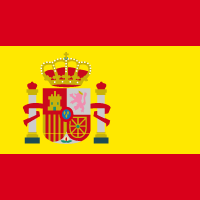Crédito Agrícola
With 1.5 million clients, 400 thousand associates, 79 regional offices, and 645 agencies, Crédito Agrícola (CA) is one of the drives of Portuguese local community development. The network of counters guarantees a close relationship with clients.
But despite this, the banking world is being transformed. Aware of these changes, CA analyses and keeps up with technologies that allow for digital transformation. To materialize the promises of digital transformation to business areas, it is necessary to change products, services and, most of all, company culture. Those changes cannot be made without having a proper technological infrastructure, ready to respond to the new realities that consumers are now demanding from brands.
CA wants to take the lead when it comes to providing innovative payment services. The bank was a pioneer in the release of the dual card, contactless card, card with chip, and vertical card. In July, CA accomplished something more when it became the first Portuguese bank to provide the Apple Pay service. But the most disruptive service offered by CA is the moey! app. This is a banking app that is available at Play Store and Apple Store. It offers a set of financial services that are free from account maintenance fees, and where card transaction fees are free, worldwide.


The advantages are increased efficiency in requirement implementation, more speed in delivery to internal clients, and mitigation of the risk inherent to changes.
Jorge Paulo Baião
Executive Director & CIO
Crédito Agrícola
The challenge
Crédito Agrícola manages these product’s support infrastructure in conjunction with Claranet.
Jorge Baião, the Executive Director and Chief Information Officer (CIO) of Crédito Agrícola, explains that the main technological approach to CA’s banking operation is “to create mechanisms that allow business to go to the market quickly, with focus, speed, and controlled, predictable costs.”
The Executive Director says that the big paradigm brought by technological innovation to organisations is “to know how to accomplish technology, by delivering innovation and new tools that meet business units’ requirements without increasing costs.”
We live in a time when everything is changing fast. To keep up with these transformations, organisations must be agile enough to adapt and change procedures, services, products, and technologies in order to benefit from new business opportunities, to grow and not to compromise their future.

The solution
Organisations must gain elasticity and speed to improve internal processes and to be able to respond to business challenges. Digital transformation helps address these challenges by providing predictable costs and controls, and by ensuring speed, flexibility and agility.
It is an opportunity to modernise CA’s architecture and platform, but before implementing such architecture and platform, it is necessary to find the pace and way to implement new technologies in the organisation. Examples are containerisation; microservices; private, public or hybrid cloud; and the emergence of new agile processes and a new DevOps culture.
The CIO sees the infrastructure-as-you-grow paradigm as based on a public cloud and private cloud.
The hybrid could in a regulated industry, such as the banking sector, is a huge matter, because it will allow to introduce and disseminate features, such as provisioning, that will be faster because they will no longer be made manually.”
This is one of the major benefits for IT teams. But among all technologies, there is one that he thinks can make all the difference: machine learning.
The result
CA took a step forward and decided to implement Microsoft Azure-based public cloud solutions.
This aims at getting flexibility to size services to meet needs, to customise applications and to access cloud services from anywhere provided with an Internet connection. Moreover, the use of a public cloud aims at providing the bank with a competitive advantage, by providing the most innovative technology available with more controlled infrastructure costs.
To make this real, some of CA’s on-premise solutions had to be migrated to the cloud. This allowed for CA to benefit from new services that facilitated the adoption of the new features, especially in the channels area. All these changes had to be monitored and managed by a partner that had proved itself in the market: Claranet.
Claranet manages all Azure’s components used by the different bank apps and takes part in the implementation of business solutions.










